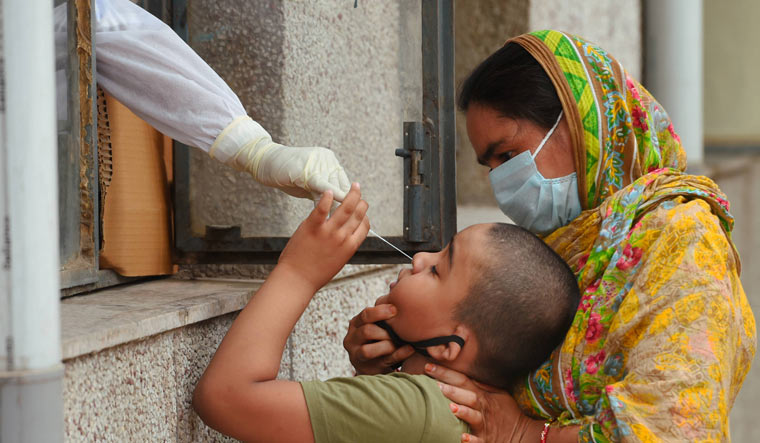In one of the largest sero-prevalence studies done in the country using the indigenous ELISA (antibody) test, the national capital New Delhi has reported an infection rate of 22.86 per cent. The study, done by the National Centre for Disease Control (NCDC) in collaboration with the Delhi government, was conducted from June 27-July 10. Survey teams fanned out in 11 districts of Delhi, blood samples were collected from select individuals (21,387 samples) and their sera were tested for IgG antibodies using the indigenous testing kit developed by the ICMR-NIV.
The ELISA test gives information about past infections due to SARS-COV-2 in individuals who test positive. The results indicate the situation in Delhi between 18-19 June, V.K. Paul, member of NITI Aayog, said. Eight districts have over 20 per cent sero-prevalence; top districts include Shahdara, central Delhi and north east Delhi where prevalence is as high as 27 per cent. Most of the people were asymptomatic, according to the government.
But, what do the sero-surveillance data mean? For one, it suggests that around 46 lakh persons in Delhi have been exposed to SARS-COV2 infection, and both infection rate and death rate are far higher than reported. This, according to a public health specialist working with the central government, can be arrived at by a simple back of the envelope calculation using the official cases and death data on June 12, and on June 25, since antibodies take about 14 days to develop.
On June 12, the reported cases stood at 36,824, and on June 25, the reported cases stood at 73,780. The number of deaths reported on these two days stand at 1,214, and 2,429. “If we take the infection fatality rate [total number of deaths divided by total number of infections] of 0.5 per cent, a figure that has been quoted in several studies across the world, the death rate on these days would come around 23,000, implying a gross under-reporting of deaths,” the expert said.
The expert said that WHO had advised countries to undertake rapid mortality surveillance as a tool to calculate the death toll due to COVID-19. Compared to using only COVID-19 confirmed deaths as a measure of impact, rapid mortality surveillance implies generating daily or weekly counts of total mortality data by age, sex, date of death, place of death and place of usual residence. This provides a more complete picture of impact, particularly for deaths that may be indirectly related to COVID-19, according to the WHO.
“This also addresses the indirect impact caused by disruptions in healthcare access and supply chains. When policymakers can compare estimated weekly number of excess deaths related to COVID-19 compared with pre-pandemic levels, they have a powerful tool to inform their national response and recovery planning,” acoording to the global health body.
Delhi's high rate of infections is in line with results of sero-surveys in various cities such as Ahmedabad, where the percentage of infections stood 55 per cent, according to media reports, the expert added. The high rate of sero-prevalence in various cities may point to government and administration “failure” and may put government’s COVID-19 response under scrutiny, and hence the reluctance to release the survey reports, experts told THE WEEK on condition of anonymity.
“In containment zones in Ahmedabad, the sero survey done by ICMR found 34 per cent infection rate. In Delhi, in containment zones, the infection was found to be 9-11 per cent,” Dr Sujeet Kumar Singh, director, NCDC, said at the health ministry briefing. The results of the sero-survey indicate that a large number of people (over 70 per cent) remained susceptible to the virus. “Having developed antibodies to SARS-COV2 was no guarantee that the person would be protected against the infection in the future, too. This is because longevity of the antibodies that have been developed against this virus is still being studied as this is a new infection,” Singh said.
Responding to a question on whether Delhi had crossed the peak of infections, Singh said that it was hard to ascertain since a large population remained susceptible to the virus.
In a scathing critique of both the state and central government response to the pandemic, Dr Vikas Bajpai, assistant professor, Centre for Social Medicine and Community Medicine, said that more than 50 per cent of Delhi’s population lived in slums and resettlement colonies. “If one included people living in unauthorised colonies, this proportion goes as high as 75 to 80 percent. This section of the population lives in dense clusters and unhygienic conditions, where "physical distancing" is merely a catchphrase, and people are most likely to catch infection.” Besides, these people have the least physical and economic access to effective institutional health services, even in normal times, Bajpai said, adding that private healthcare needed to be firmly brought under the control of the government by “nationalising” it until the pandemic is over.



